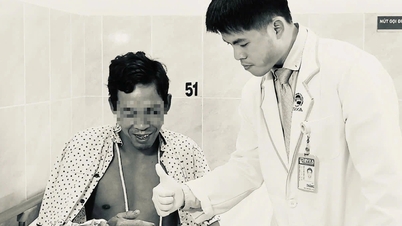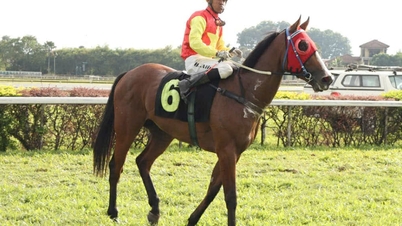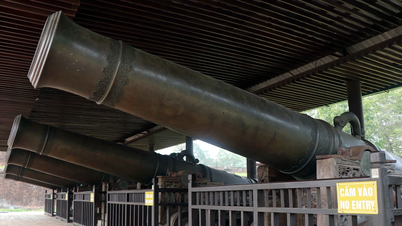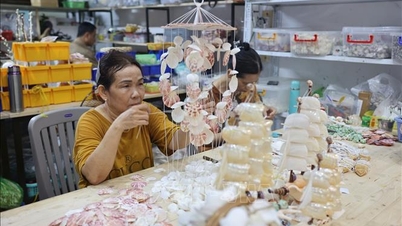Master - Doctor Tran Vu Hoang Duong, Head of the Department of Cranio-Spine 2, Xuyen A General Hospital, Ho Chi Minh City, said that the pain of the musculoskeletal system in general, and the spine in particular, can be caused by many reasons. Besides factors related to trauma, the remaining common cause is due to degenerative conditions of the joints. Currently, besides examination to determine and resolve the cause to bring long-term effectiveness, early pain relief is an indispensable treatment to help patients feel more comfortable, return to daily activities soon and improve their quality of life.
There are many methods to relieve pain in these cases, including oral medications, injections (local or systemic), and other invasive interventional therapies (RF). However, these indications must be given after a doctor examines and evaluates the condition, combined with a step-by-step treatment monitoring process.

Do not abuse or arbitrarily inject painkillers to treat spinal diseases.
PHOTO: AI
Consequences of abusing or self-medicating with painkiller injections
According to Dr. Duong, the abuse or arbitrary injection of local pain relievers to treat spinal diseases without a full examination or performed at unqualified medical facilities can lead to many consequences and even serious complications such as:
Infection: Including infection at the injection site, or more seriously, deep infection leading to osteomyelitis, epidural abscess or even sepsis (a serious complication that can be life-threatening).
Damage to important structures near the injection site , especially the nervous structures: spinal cord, nerve roots. This can lead to paralysis.
Bleeding : Causes spinal cord compression, this risk can occur in people with bleeding disorders (without prior knowledge) or using anticoagulants.
Drug allergy - Anaphylactic shock : Any drug used has this risk, although the rate is low. But if it occurs outside of a medical facility, emergency treatment may not be timely and can have serious consequences.
Drug dependence : Some ingredients in pain-relieving injections contain steroids and psychoactive pain relievers. If abused and not prescribed properly, one may face side effects and become dependent on the drug.
To inject pain relief locally, in addition to the doctor having to accurately determine the condition and prescribe the appropriate indication, this is considered a small but invasive procedure. Therefore, it requires good sterilization, from the tools to the implementation process.
Especially for cases of pain relief injections related to degenerative spinal diseases, this place is located near other important components (spinal cord, nerve roots, blood vessels...) so it needs to be performed accurately and with testing equipment (under direct guidance of ultrasound or continuous X-ray).
"When experiencing neck and shoulder pain or numbness in the limbs, patients should go to a hospital or medical facility that has full safety equipment for treatment and monitoring. At the same time, doctors should accurately determine the condition of the disease and prescribe appropriate pain-relieving injections to avoid dangerous complications," Dr. Duong recommends.
Complete paralysis after painkiller injection at private clinic
As reported by Thanh Nien , doctors at the Central Hospital for Tropical Diseases ( Hanoi ) said that a 70-year-old patient (in Quang Ninh) was admitted to the hospital with quadriplegia, loss of reflexes, and severe respiratory failure due to respiratory muscle paralysis. Although still conscious, the patient could not breathe on his own or move any limbs. MRI results showed that the patient had a severe cervical disc herniation at the C2-C3 position, causing spinal cord compression and leading to widespread cervical myelitis. The patient was transferred for emergency decompression surgery. Notably, the patient also had symptoms of sepsis and purulent meningitis. The patient had been treated for pulmonary tuberculosis, and had a weakened immune system, increasing the risk of infection and central nervous system damage.
According to the patient’s family, before being hospitalized, due to prolonged neck and shoulder pain, the patient went to a local private clinic and was injected with painkillers there. After the injection, the condition did not improve but became worse: weak limbs, loss of sensation, difficulty breathing, then complete paralysis from the neck down.
Source: https://thanhnien.vn/bac-si-nguy-co-yeu-liet-khi-lam-dung-tu-tiem-thuoc-giam-dau-18525071620045359.htm















































































































Comment (0)